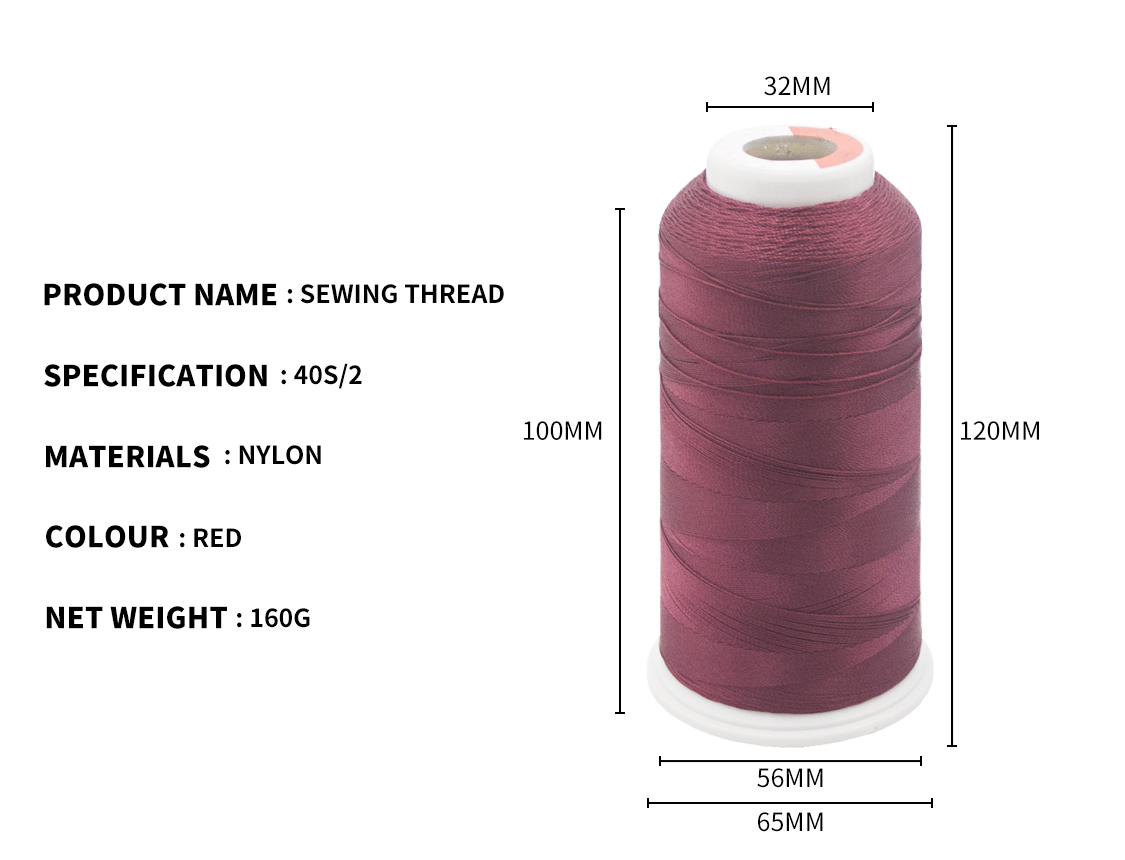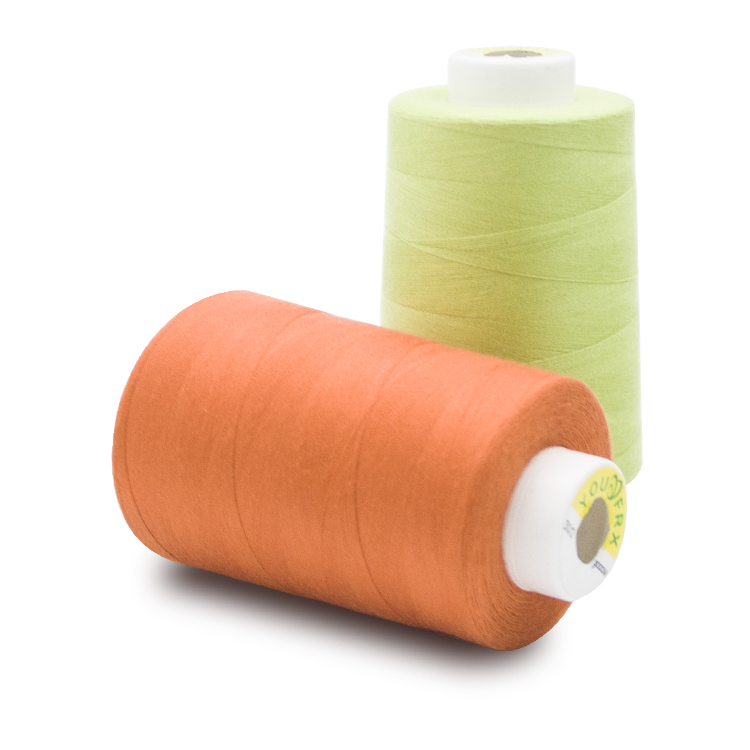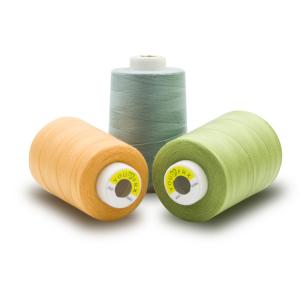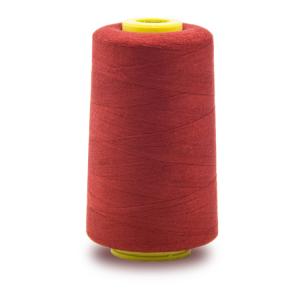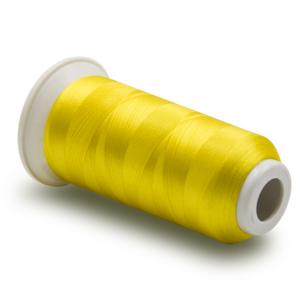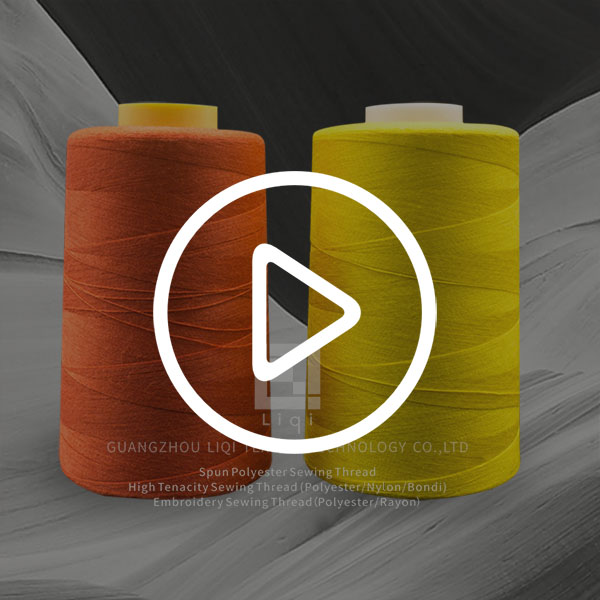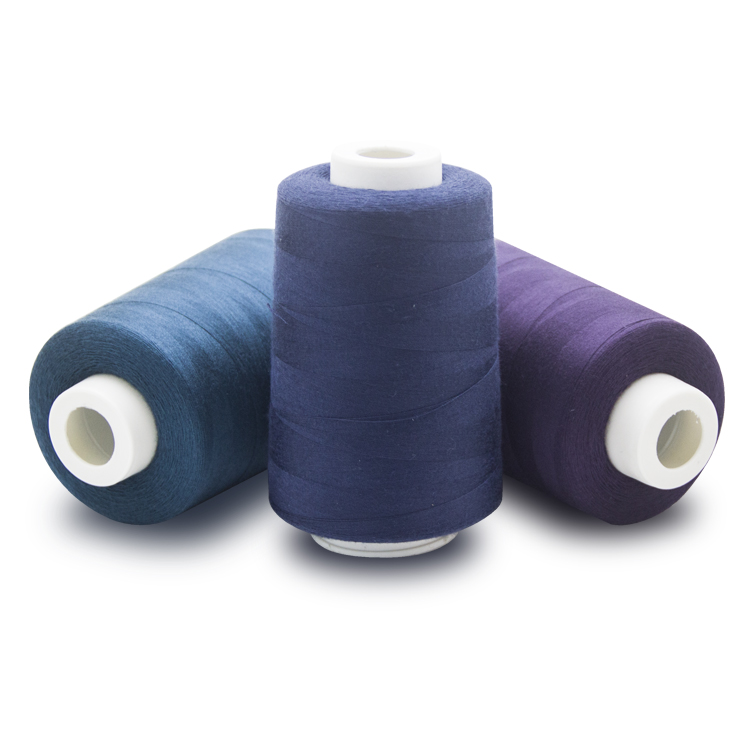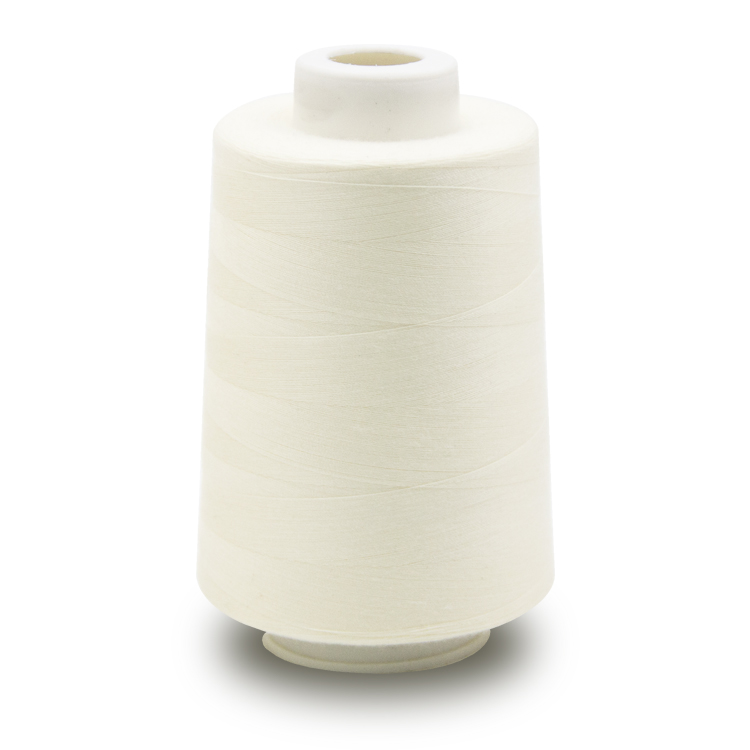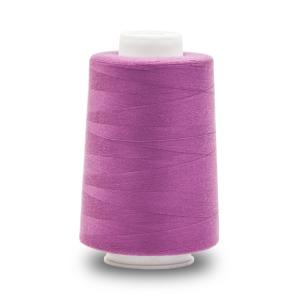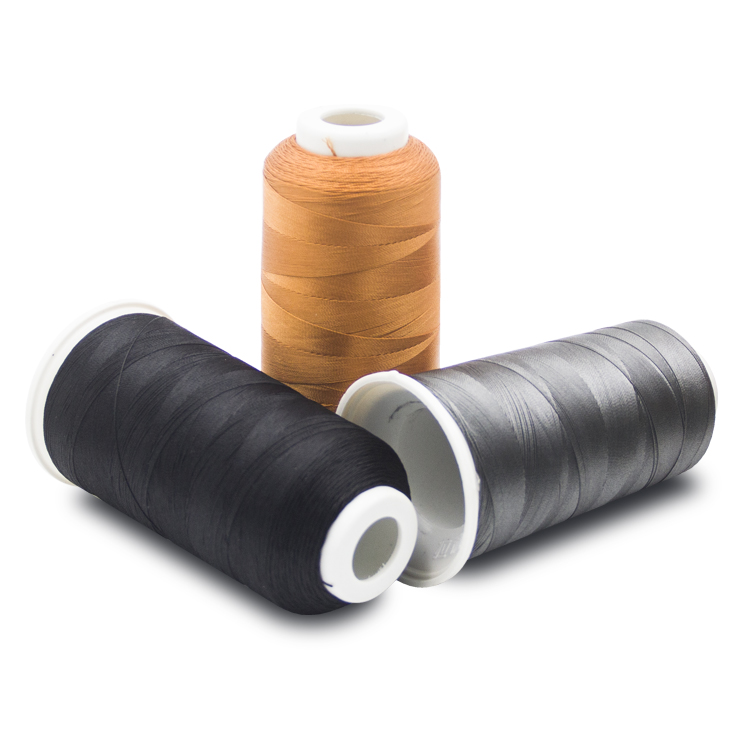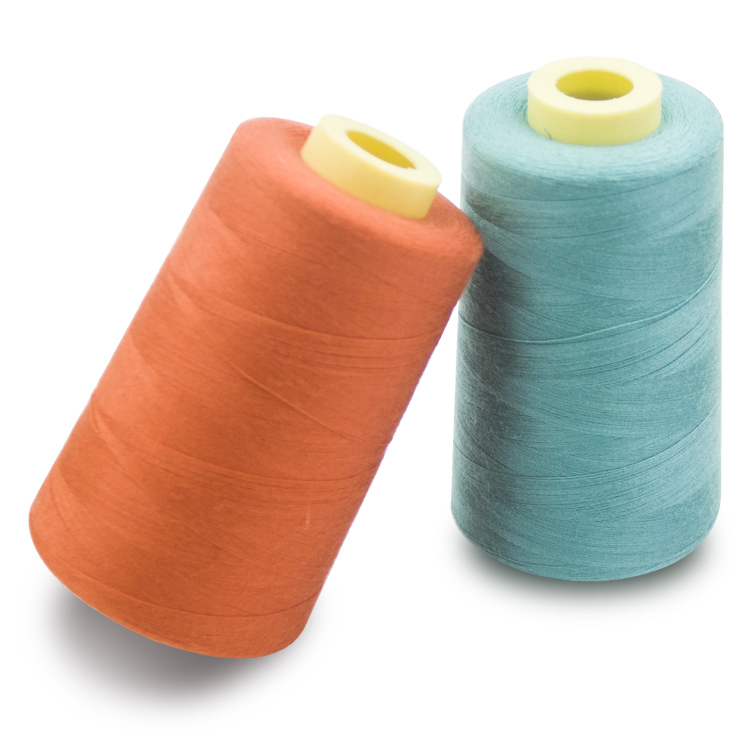Share to:
Related Products
Polyester cotton bag stitching closing sewing thread 20/4 30/2 40/2
LQ-13-06
Price: From $0.66
Delivery time: 9-20 days after payment
MOQ: 500 kg
Model number:40/2
Pattern:Dyed
Feature:High tenacity
Color:Colors
Yarn Type:Spun Yarn
Usage:Sewing weaving knitting
Technics:TFO
Sample:Provide
Other count:20/2 20/3 20/4 50/2 60/3
Payment:T/T, L/C
Name: Sewing thread
Yarn Composition: Vinylon, polyester
Composition ratio: Polyethylene polyester
Yarn Form: Bobbin yarn thread
Yarn structure: Ply yarn
Yarn count: 20s
Twist: Standard
Yarn quality: First class
Origin: Guangzhou
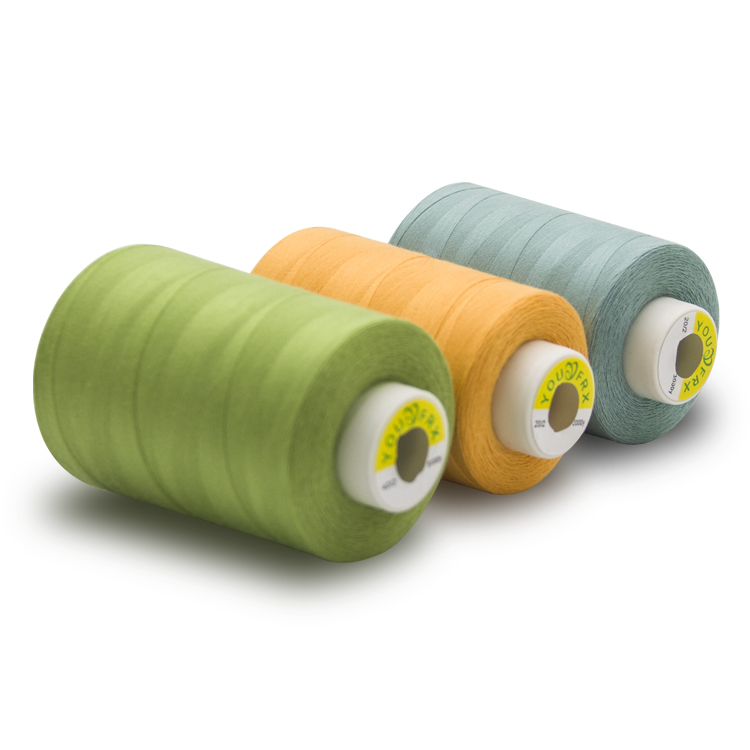
Scope of application: Knitting yarn thread, sewing yarn thread, woven yarn thread.
Sewing threads are threads used to sew various materials. According to the raw materials, it can be divided into cotton yarn thread, silk yarn thread, polyester yarn thread, nylon yarn thread, vinylon yarn thread, polyester-cotton blended yarn thread and synthetic filament yarn thread.
The single yarn count of sewing yarn thread ranges from 9 to 80. Most of the yarns threads are 3 strands. There are also 2 strands, 4 strands and more than 6 strands, up to 12 strands. More than six strands of sewing thread are generally used in leather, canvas and shoemaking industries.
In the era of manual sewing, cotton twisted yarn thread and silk yarn thread are the main types of sewing thread. Sewing thread is the thread needed for knitted clothing products.
Sewing thread can be divided into natural fiber sewing thread, synthetic fiber sewing thread and mixed sewing thread according to raw materials.
With the development of polyester industry, more and more pure polyester fibers are used as raw materials for sewing thread.
Polyester fibre is a kind of synthetic fibre with good quality. It is used to make stitches with high strength.
It is second only to nylon in all kinds of stitches, and it will not reduce strength in wet state.
Its shrinkage rate is very small. After proper setting, the shrinkage is less than 1%.
Therefore, the sewing stitches can always be flat and beautiful without shrinkage. Wear resistance is second only to nylon.
Low moisture regain, good heat resistance, low temperature resistance, light resistance and water resistance.
Therefore, polyester yarn thread is a widely used variety, in many occasions, instead of cotton sewing thread.
Polyester yarn thread is widely used in garment sewing of cotton, chemical and blended fabrics, as well as knitted garments.
Specially made polyester yarn thread is also a good thread for shoes, caps and leather industry.
Sewing thread is the thread needed for knitted clothing products.
Sewing thread can be divided into natural fiber sewing thread, synthetic fiber sewing thread and mixed sewing thread according to raw materials.
With the development of polyester industry, more and more pure polyester fibers are used as raw materials for sewing thread.
Polyester fibre is a kind of synthetic fibre with good quality.
It is used to make stitches with high strength. It is second only to nylon in all kinds of stitches, and it will not reduce strength in wet state.
Its shrinkage rate is very small. After proper setting, the shrinkage is less than 1%.
Therefore, the sewing stitches can always be flat and beautiful without shrinkage. Wear resistance is second only to nylon.
Low moisture regain, good heat resistance, low temperature resistance, light resistance and water resistance.
Therefore, polyester yarn is a widely used variety, in many occasions, instead of cotton sewing thread. Polyester yarn is widely used in garment sewing of cotton, chemical and blended fabrics, as well as in sewing jackets. Specially made polyester yarn is also a good thread for shoes, caps and leather industry.
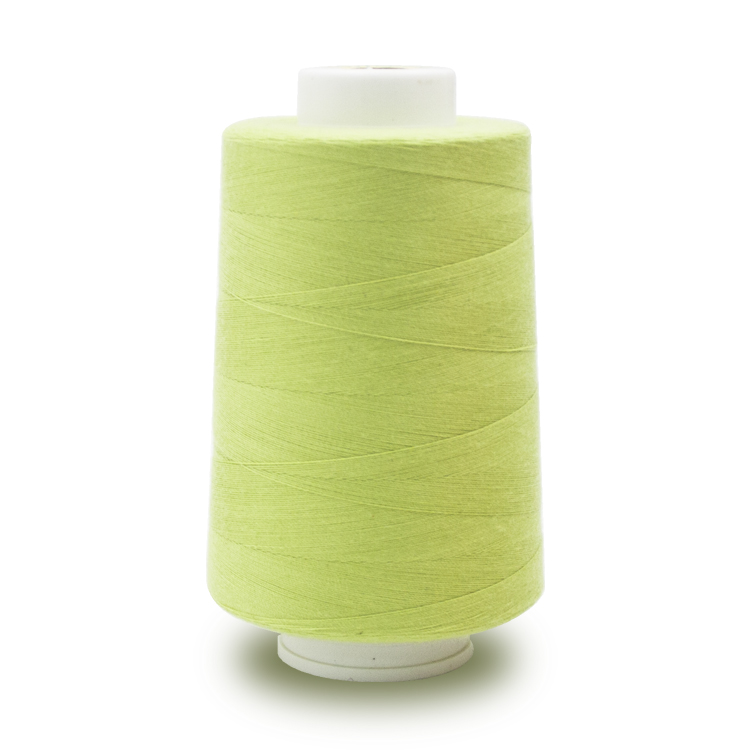
The term sewing thread
Polyester sewing thread is also called high strength thread, polyamide sewing thread is called nylon thread, we usually call it (pearl ray) polyester sewing thread is twisted by polyester long or staple fibers, wear resistance, low shrinkage and good chemical stability. However, polyester yarn is widely used in clothing sewing of cotton, chemical fibers and blended fabrics because of its high strength, good wear resistance, low shrinkage, good moisture absorption and heat resistance, corrosion resistance, non-mildew, insect-proof and other advantages.
In addition, it has the characteristics of complete color, good color fastness, non-fading, non-fading, sun resistance and so on.
The difference between polyester sewing thread and nylon sewing thread, the ignition of polyester, black wool smoke, low odor, no elasticity, and nylon sewing thread ignition is also a lump, white smoke, pull up more elastic odor. High abrasion resistance, good light resistance, mildew resistance, color about 100 degrees, low temperature dyeing. It is widely used because of its high strength, durability, flat seam, and can meet the needs of a wide range of different sewing industrial products.
Flame retardant sewing thread
Fire sewing thread (also known as Flame Retardant thread)
Flame retardant sewing thread material is divided into:
1. Pure polyester flame retardant sewing thread
2. Clear cotton flame retardant sewing thread
3. Aramid flame retardant sewing thread
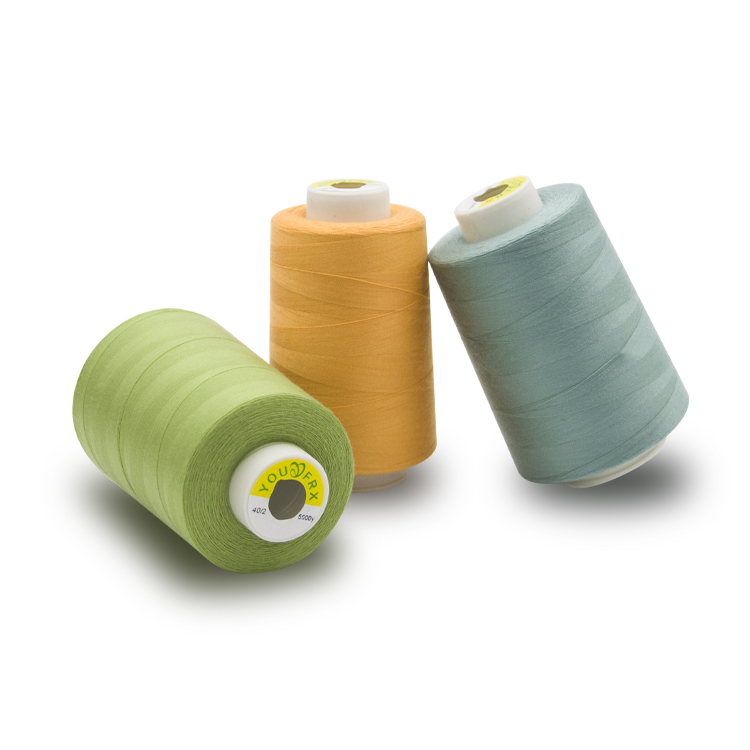
Specifications are: 20S/2, 30S/3, 40S/3, 24S/4.
These three kinds of flame-retardant sewing threads have low ignition point, good flame-retardant effect, and are not easy to ignite.
They are extinguished within seconds from the source of fire.
They have high temperature resistance of over 300 degrees and permanent flame-retardant. Comparing with Non-Flame-Retardant threads, they are obviously different.
Suitable for: sewing fire-fighting, electric welding, fire-proof and high-temperature-resistant textiles.
It can sew fire-proof inorganic curtains, fire-proof and high-temperature gloves, fire-proof quilts, fire-proof and high-temperature sealing rings, thermal insulation blankets, canvas, PVC rubber cloth, leather products, clothing, handbags, upper, silver bags, travel bags, leather gloves, tents, chair covers, leather cases, leather boxes, etc. Leather, etc.
Quality and application of sewing thread
The comprehensive index for evaluating the quality of sewing thread is seamlessness.
Sewing performance shows that under specified conditions, sewing thread can smoothly sew and form good stitches, and maintain certain mechanical properties in stitches.
The quality of sewability will directly affect the production efficiency, sewing quality and service performance of garments.
According to the national standards, sewing threads are classified into first-class, second-class and second-class foreign products. In order to make the sewing thread have the best sewability in garment processing and the sewing effect is satisfactory, it is very important to select and apply the sewing thread correctly.
The correct application of sewing thread should follow the following principles:
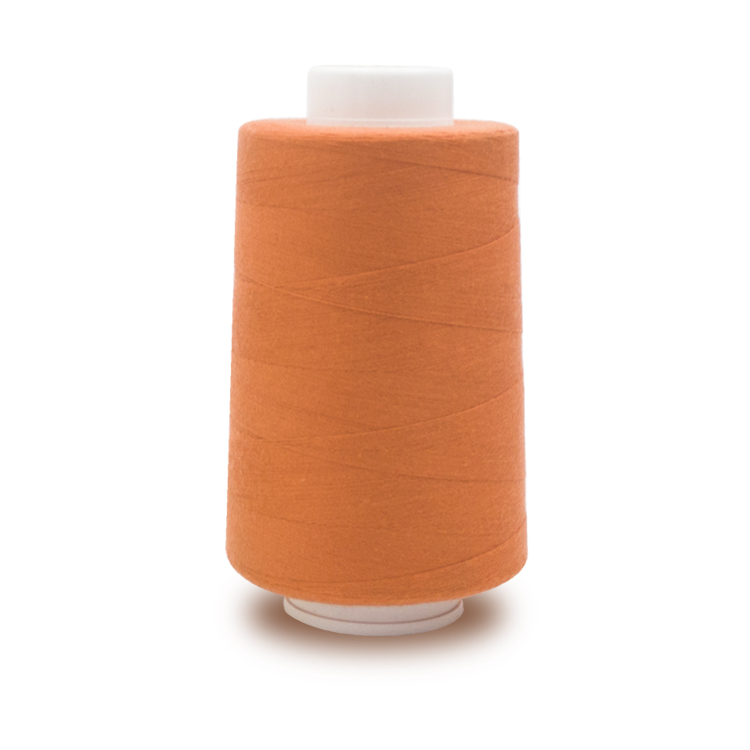
(1) Compatibility with fabric characteristics: Only when sewing thread is the same or similar to the material, can it ensure the unity of shrinkage, heat resistance, wear resistance and durability, and avoid the appearance shrinkage caused by the difference between thread and fabric.
(2) Consistent with the type of garment: For special purpose garments, special function sewing thread should be considered, such as elastic sewing thread for elastic garments and sewing thread for fire fighting garments through heat resistance, flame retardant and water proof.
3. Coordinate with the stitch form: The stitches of different parts of garments are different.
Sewing threads should also be changed accordingly.
For example, the lines or deformation lines need to be used to expand the stitches.
Double thread stitches should be chosen with extended threads. The crotch seam and shoulder suture should be fastened, while the eyeliner should be wear-resistant.
(4) Unify with quality and price: The quality and price of sewing thread should be unified with the grade of clothing, high-grade clothing with good quality and high price sewing thread, middle and low-grade clothing with general quality and moderate price sewing thread.
Generally, the label of sewing thread is marked with the grade of sewing thread, the use of raw materials, yarn thread count fineness and so on, which is helpful for us to choose and use sewing thread reasonably.
Sewing thread labels usually include four items (arranged in sequence): yarn thread thickness, color, raw material and processing method, which can be expressed in the form of "60/2x3 white polyester yarn".
Sewing thread is used to sew various garment materials, which has dual functions of practicality and decoration. The quality of sewing not only affects the sewing effect and processing cost, but also affects the appearance quality of finished products.
Therefore, the general concept of seam formation, twist, the relationship between twist and strength, seam classification, characteristics and main uses, seam selection are introduced in order to facilitate enterprises to formulate standards and carry out relevant tests, and to determine seams pertinently.
